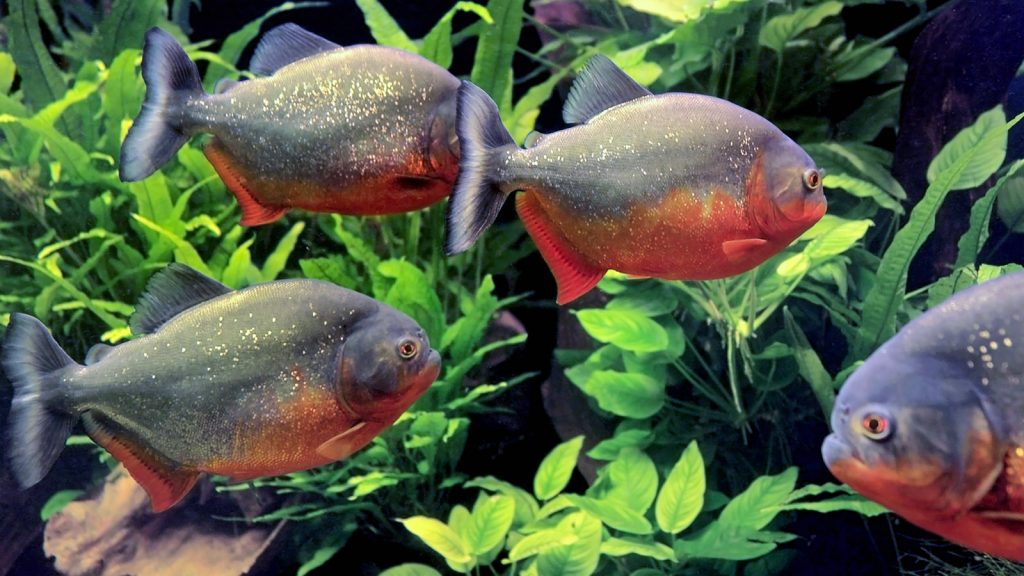

In very large aquaria multiple pairs can spawn simultaneously.

Eggs and spawn are deposited in several batches and guarded by the male, sometimes assisted by the female. Receptive females demonstrate interest by mouthing the substrate around the nest, and both male and female now display a darker body colouration. Aquatic plants may also be cropped, and the resultant ‘nest’ is defended against other males. In some documented cases spawning has been initiated by large, cool water changes, whereas in others it occurred without intervention.Īs males come into breeding condition they begin to become territorial, mouth and caudal-fin to create a pit in the substrate at the centre of their chosen site. Unless you can find a sexed pair it is perhaps best to begin with a group of 6+ individuals, allowing pairs to form naturally.

Sexual maturity is reached at around a year of age and 100-150 mm TL. nattereri is relatively easily to breed in the aquarium. Flooded marginal vegetation and marginal grasses within floodplain lakes are the preferred spawning areas. Wild populations exhibit two annual reproductive seasons, the first during the rising of the water level at the onset of the wet season, and the second during the low water period during November and December, when there is a sudden temporary increase in water level.

Sexual Dimorphismįemales generally attain a larger adult size and exhibit a more-rounded body shape than males. Older individuals exist in loose groups and form dominance hierarchies, therefore the purchase of either a single specimen or group of 5+ is recommended, with the latter preferable. nattereri hunt in voracious packs, but usually only juveniles form aggregations. Behaviour and Compatibility Top ↑īest-maintained alone, although adults do not tend to prey on much smaller fishes. To find other high quality, highly recommended foods click here. This species should not be fed mammalian or avian meat since some of the lipids contained in these cannot be properly metabolised by the fish and may cause excess fat deposits and even organ degeneration. Similarly, there is no benefit in the use of ‘feeder’ fish such as livebearers or small goldfish, which carry with them the risk of parasite or disease introduction and tend not have a high nutritional value unless properly conditioned beforehand. In the aquarium juveniles can be offered chironomid larvae (bloodworm), small earthworms, chopped prawn, and suchlike, while adults will accept strips of fish flesh, whole prawns, mussels, live river shrimp, larger earthworms, etc. They sometimes attack sick or dying fishes, scavenge carcasses, or bite chunks from the fins of larger species, but assaults on live animals entering the water are very rare and mostly relate to accidental biting or cases in which numbers of fish have become trapped in small pools during dry periods. Each jaw contains a single row of sharp, pointed, triangular teeth, which are used like blades to puncture, tear, chop, and crush. The natural diet consists of live fishes plus aquatic invertebrates, insects, nuts, seeds, and fruits. are not exclusive carnivores and are more accurately described as opportunistic generalists. To search for other high quality aquarium heaters in your area, click here. Suitable only for public installations or the very largest private aquaria. Habitatįound in most habitat-types across its range including major river channels, smaller tributaries, oxbows, floodplain lakes, and artificial lakes formed by dams. Type locality is ‘Cuiabá and Mato Grosso, Brazil’. Order: Characiformes Family: Serrasalmidae DistributionĬurrently accepted to occur throughout much of the Amazon basin (Brazil, Ecuador, Peru, Bolivia, and questionably Colombia), as well as the Río Essequibo (Guyana and Venezuela), some smaller, coastal drainages in north-east Brazil/the Guianas, and further south in the Río Paraná (Brazil, Paraguay, and Argentina) and Río Uruguay (Brazil, Uruguay, and Argentina). Nattereri: named for Austrian naturalist Johann Natterer (1787-1843). Pygocentrus: from the Ancient Greek πῡγή (pūgḗ), meaning ‘rump’, and κέντρον (kéntron), meaning ‘sharp point, thorn, spine’, in reference to the serrated abdomen in genus members. Pygocentrus altus Gill, 1870 Serrasalmo ternetzi Steindachner, 1908 Etymology Pygocentrus nattereri KNER, 1858 Red Bellied Piranha Synonyms Top ↑


 0 kommentar(er)
0 kommentar(er)
